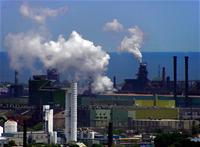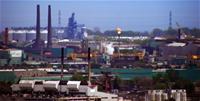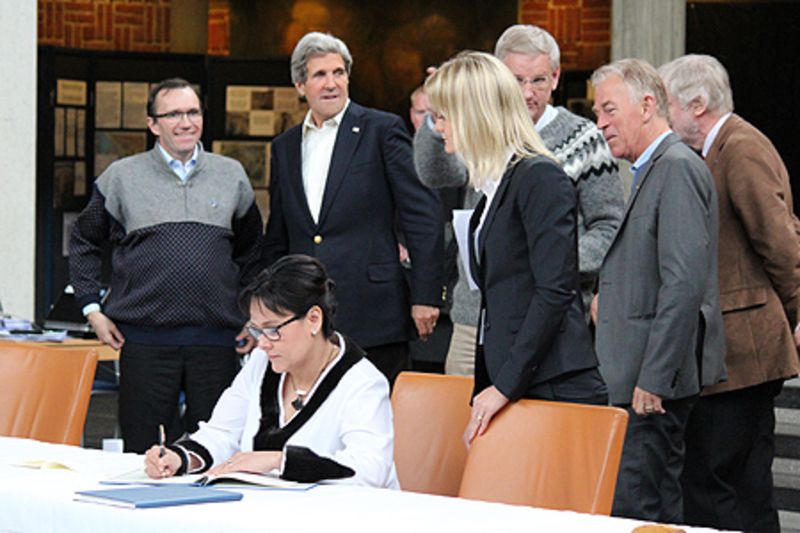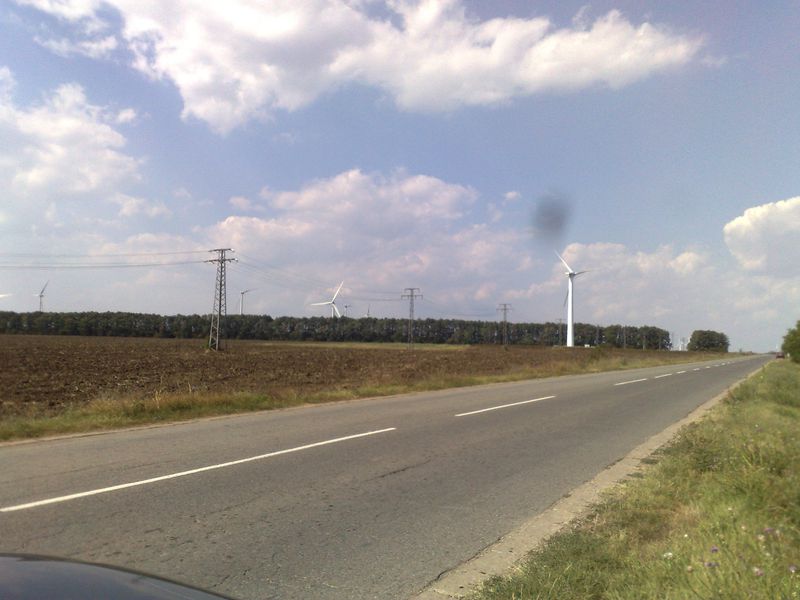The 10 biggest polluters in Europe
Adelina Marini, July 28, 2009
 Steel and metal producers are the biggest polluters in Europe, the first of its kind research shows which also includes a map of EU polluters. Unfortunately the map does not cover Bulgaria and Malta. Bulgaria is not included probably because its National Action Plan for the period 2008-2012 is still not approved. This is what euinside was told by the authors of the project from Sandbag, who dedicated their work to climate change. The map covers 12,000 installations in all EU member states, excluding Bulgaria and Malta, as mentioned above.
Steel and metal producers are the biggest polluters in Europe, the first of its kind research shows which also includes a map of EU polluters. Unfortunately the map does not cover Bulgaria and Malta. Bulgaria is not included probably because its National Action Plan for the period 2008-2012 is still not approved. This is what euinside was told by the authors of the project from Sandbag, who dedicated their work to climate change. The map covers 12,000 installations in all EU member states, excluding Bulgaria and Malta, as mentioned above.
How did Sandbag decided to draw the map? The authors have been provoked by the EU Trade Emissions System (ETS). On the map you could choose a state. The red dots show the objects that have received more permissions to trade emissions than they need which means that they are in a position to benefit from sales. The green dots show objects, pending permissions to cover their surpluses. Unfortunately, sellers distinctly outnumber buyers, which is easy to understand. But the basis for the project is the ETS through which the EU participates in global efforts to tackle climate change.
The ETS covers 50% of EU's emissions. The system consists of the following principle: it puts a cap on carbon emissions. Everyone that is participating in the scheme receive permissions as each permission covers one tonne of carbon emissions. Everything above the cap should be sold to other factories which cannot fill their quotas and, thus, can benefit by taking others' emissions against different engagements, including money. The system is relatively flexible because it allows surpluses to be traded in third countries. For example, if a factory has carbon emissions surpluses it can participate in an ecological project elsewhere in the world and that might be cheaper than buying quotas from another factory. The problem is that surpluses are many and the demand is constantly falling.
This is clearly shown in the report of Sandbag. According to the authors of the report, the capacity of ETS is fairly enough to lead to tangible drop of carbon emissions but, instead, it is not very effective. The document defines several problems. One is that too many permissions are given for trade and the cap that is defined does not cover the warnings of scientists. Thus the surpluses are formed which have to be sold but there are no buyers. And this is the second problem - the lack of tools to increase demand. Things can worsen further when the US gets involved in the emission trade and they will definitely produce surpluses which they will need to sell.
This is how the leading role of the EU in global efforts to tackle climate change, as euinside has written several times, is under threat. Sandbag propose the following solution: the ambition for the  next phase of ETS (which will be after 2020) to be greenhouse gas emissions to be reduced with at least 30%. At the moment the EU has agreed 20% decrease in the so called 20-20-20 scheme. But the EU leaders have already discussed the option of a 30% decrease. However, this might appear to be only an engagement and not a real achievement because of the different starting points of the 27 and because of the year, chosen for comparison - 2005. Bulgaria, for example, insists on 1989 when its industry was booming.
next phase of ETS (which will be after 2020) to be greenhouse gas emissions to be reduced with at least 30%. At the moment the EU has agreed 20% decrease in the so called 20-20-20 scheme. But the EU leaders have already discussed the option of a 30% decrease. However, this might appear to be only an engagement and not a real achievement because of the different starting points of the 27 and because of the year, chosen for comparison - 2005. Bulgaria, for example, insists on 1989 when its industry was booming.
But the problem is not who will lead global efforts in dealing with climate change. A much more serious issue is whether climate change can wait until the world agrees how to slow them down. If you ask scientists they will tell you that we are already too late and the aspects of a good agreement are not that good, because of the crisis.
The good news is that unlike previous attempts to agree on a new global climate change treaty, this time there is action worldwide and this leaves the impression that this time something different might happen. A good example are the several conferences that will take place before the one in Copenhagen. The Financial Times newspaper also organisers a meeting, dedicated to climate change. It will gather different experts, journalists, business representatives in the energy field who will try to find an answer to probably the most fundamental question: How will the pressures of climate, carbon and credit transform the competitive landscape of the global energy industry?
And regarding the political side of the issue, beside the fact that leading industrialized countries change radically their legislation, some of them have a new post - a minister of energy and climate. So far we know of 2 countries - the UK and Denmark. In Bulgaria the new government kept the existing Ministry of economy and energy and added to it tourism as well. But Bulgaria has a separate Ministry of the environment and waters. So far it not only has not contributed with a good legislation, directed to global efforts but also has not prepared the National Action Plan for carbon emission until 2012.
Of course, we will give some tolerance to the new government, but, as already mentioned, climate change is not very keen on waiting.
 | © Government of Sweden
| © Government of Sweden | © КРИБ
| © КРИБ | © euinside
| © euinside